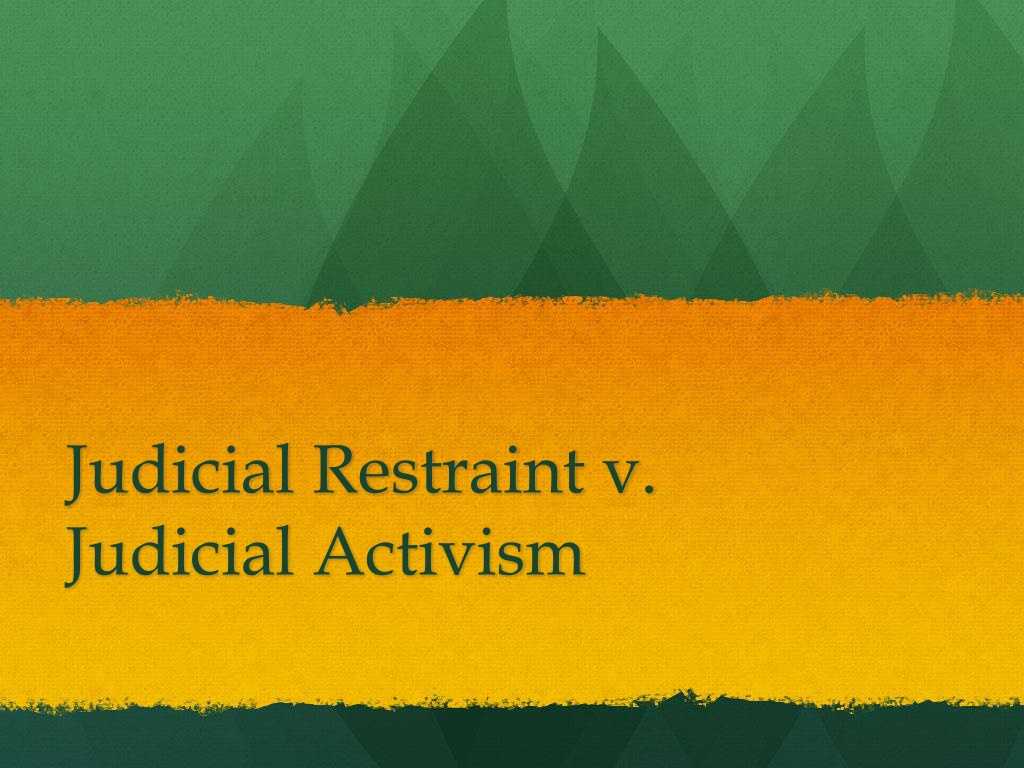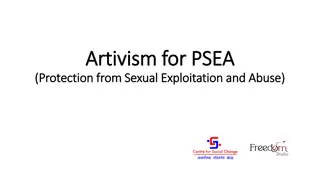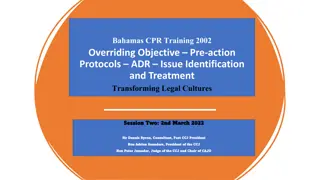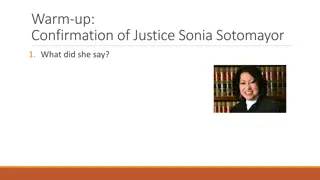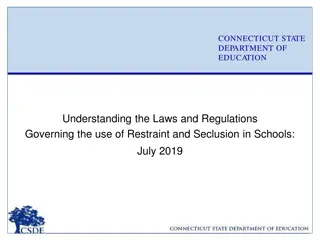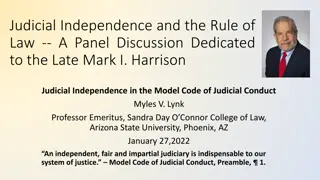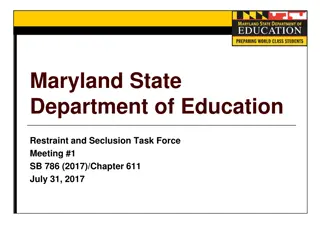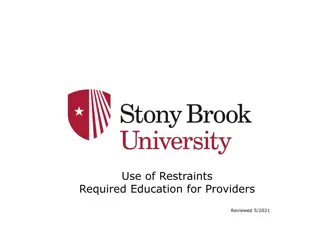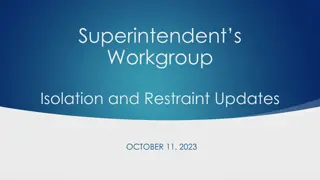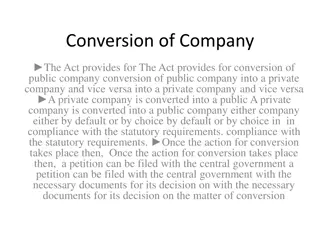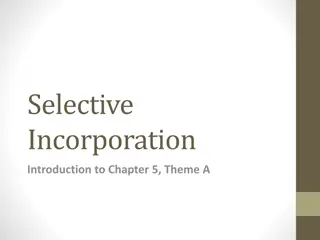Understanding Judicial Restraint vs. Judicial Activism & Selective Incorporation in U.S. Law
Judicial restraint emphasizes a strict interpretation of the Constitution, while judicial activism advocates for a flexible approach to adapt to modern circumstances. Selective incorporation examines the application of the Bill of Rights to state actions, especially relevant during the 14th Amendment's passage post-Reconstruction.
Download Presentation

Please find below an Image/Link to download the presentation.
The content on the website is provided AS IS for your information and personal use only. It may not be sold, licensed, or shared on other websites without obtaining consent from the author. Download presentation by click this link. If you encounter any issues during the download, it is possible that the publisher has removed the file from their server.
E N D
Presentation Transcript
Judicial Restraint v. Judicial Activism
Judicial Restraint Stick to a strict interpretation of the Constitution. Use the original intent of the Framers. If Constitution is silent or ambiguous, defer to states and/or elected branches.
Judicial Restraint (cont.) Judges are not elected and not accountable to the people. They should not be policy makers. They should not impose their personal views. Amendments can be used to update the Constitution if need be.
Judicial Activism The Constitution is a living document. A broad interpretation should be used to account for modern circumstances. Uphold the spirit of the Constitution, not just the letter.
Judicial Activism (cont.) Courts are the last resort for the powerless. Legislative majorities can be discriminatory. The Amendment process is too difficult to navigate.
Selective Incorporation
Selective Incorporation Does the Bill of Rights apply to actions taken by the states? In Barron v. Baltimore (1833), John Marshall said NO! Federalism demands that state courts be allowed to adjudicate state laws and actions.
Const. Bill of Rights F E D E R A L I S M State S.C. S.C. Fed. Appeals State Appeals Fed. District Courts State District Courts Congress State Govt. President
Selective Incorporation (cont.) During Reconstruction, the 14th Amendment was passed to try and protect freed slaves from unfair state laws. By repeating the Due Process clause and creating the Equal Protection clause, Congress was hoping that unfair state laws could be struck down by the S.C..
Const. Bill of Rights F E D E R A L I S M 14th Amendment State S.C. S.C. Fed. Appeals State Appeals Fed. District Courts State District Courts Congress State Govt. President
Selective Incorporation (cont.) In Gitlow v. NY (1925), the S.C. allowed an individual to use the 14th Amendment to challenge a state law restricting free speech. Although the Court upheld Gitlow s conviction, this case established a precedent that provisions of the Bill of Rights could be applied to the states.
Selective Incorporation (cont.) The idea that the 14th Amendment makes the Bill of Rights applicable to the states is called the incorporation doctrine. Over the past 60 years, the S.C. has, on a case-by-case basis (i.e., selectively), nationalized most of the provisions of the Bill of Rights.
Const. Bill of Rights F E D E R A L I S M 14th Amendment State S.C. S.C. Fed. Appeals State Appeals Fed. District Courts State District Courts Congress State Govt. President
